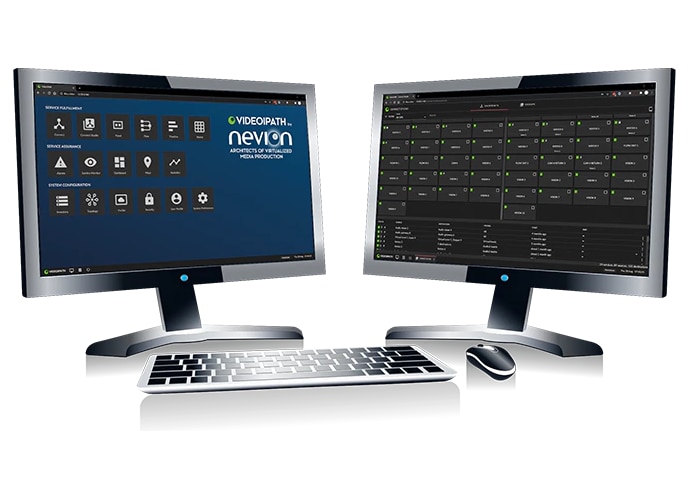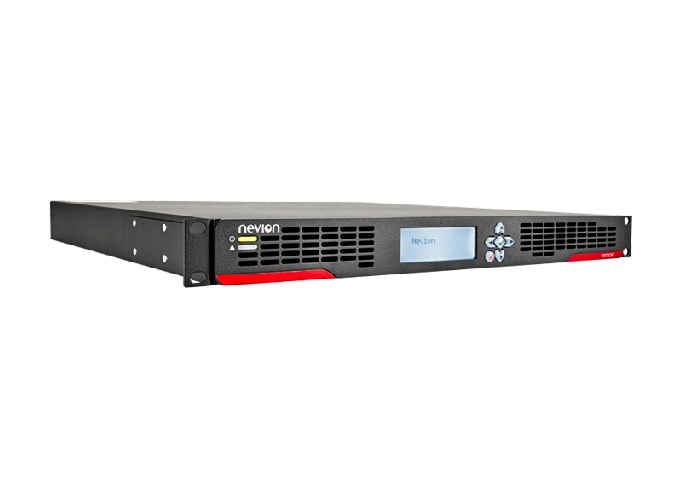
Nevion helps Riot Games produce esports globally
Video developer and esports tournament producer Riot Games is using Nevion’s (a Sony group company) remote production solution to orchestrate media flows between gaming venues around the world and its production centers.
- The esports tournament leader needed an efficient, flexible solution to link remote sites with production centers
- Nevion Virtuoso software-defined media node
- VideoIPath media orchestration and SDN control platform
- High-quality “any time, any place” media production
- Supports Riot Games’ ambitions to become a global multi-game esports leader
We knew that Nevion’s products, expertise and experience would enable us to build an IP solution that would allow for more global efficiency for our esports productions.
Scott Adametz, Senior Manager of Infrastructure Engineering, Riot Games
Accommodating exploding esports popularity
Riot Games is the creator of League of Legends Esports (LoL Esports), the professional online multiplayer battle arena game that’s one of the world’s biggest esports tournaments.
With esports continuing to explode in popularity worldwide, Riot Games needed to build a global production system to support “anywhere, any time” production of live events from its centralized production data centers. Based in Ireland, Riot Games’ new remote broadcast and content production center (RBC) is the first of several interconnected sites that will support a global “follow-the-sun” production model, capable of producing several events simultaneously across different time zone requirements.
Supporting production everywhere
To help realize this ambition, Nevion – a Sony Group Company – is delivering a remote production solution that orchestrates media flows between distant venues and the RBC across Riot’s wide area network (WAN). Known as “Project Stryker,” the global IP remote production solution is built around Virtuoso – Nevion’s standards-based software-defined media node – and its orchestration and SDN control software, VideoIPath.
The Virtuoso nodes are deployed in SMPTE ST 2110 enabled data centers, and in transportable mobile contribution kits that can be taken to event locations as needed. Each media node supports a range of functions to transport flows across the network. These include SDI/SMPTE ST 2110 adaption, JPEG XS low latency video compression, MADI processing/transport and IPME (IP media edge) functionality for LAN to WAN hand-off, multicast to unicast conversion, and flow protection.


Leading the way in IP-based remote media orchestration
Riot Games’ first deployment of Nevion Virtuoso with JPEG XS dates back to 2019 with remote production of the League of Legends World Championship Final – one of the world’s first uses of the compression technology. Recently, Riot completed successful integration of MADI over IP/ST2110 between Los Angeles and Iceland during the League of Legends World Championship in Iceland.
Nevion’s VideoIPath media orchestration and SDN control platform enables Riot Games to quickly connect remotely-connected contribution kits with centralized production infrastructure in its data centers. VideoIPath provides dynamic connection and orchestration of all media flows, carefully managing and optimizing the use of bandwidth over network connections. It will configure the Virtuoso media node adaptation, JPEG XS compression and flow protection to suit different production requirements, with integrated service-level monitoring.
Growing global ambitions
“We are embarking on an ambitious plan to develop new production and operations workflows that will support our growth from a single-game esports company to a multigame future,” says Scott Adametz, Senior Manager of Infrastructure Engineering at Riot Games. “Having worked with Nevion for a couple of years already, we knew that Nevion’s products, expertise and experience would enable us to build an IP solution that would allow for more global efficiency for our esports productions.”
“Riot Games are real pioneers in live production,” adds Nevion CEO Thomas Heinzer. “We’re always proud to be part of their innovative projects – from their first use of JPEG XS to this latest venture to create truly global production capability.”




